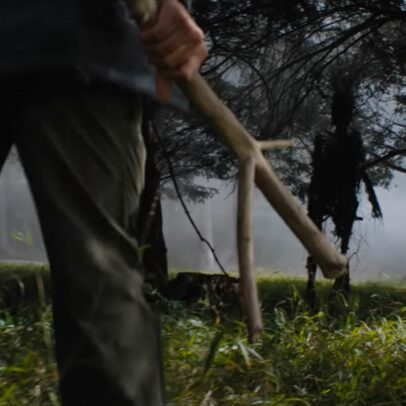One of my favorite films of the holidays is A Christmas Carol
. Every season begins with Patrick Stewart’s 1999 version and ends with Alastair Sim’s superior classic from 1951. I also throw in a few other versions and radio adaptations for good measure. But what is the story behind this classic Christmas ghost story? Director Bharat Nalluri (MI-5, Torchwood) and writer Susan Coyne bring the novel by Les Standiford to life in The Man Who Invented Christmas, peeling back the classic tale to unveil the story of how Charles Dickens kept his career from ruin thanks to a man named Ebenezer Scrooge.
Our film is set in 1843 and author Charles Dickens (in a marvelous performance by Dan Stevens, Legion and Downton Abbey) is suffering from writer’s block. After several huge hits, including Oliver Twist, he’s been plagued with diminishing sales and a dwindling audience. His wife Kate (Morfydd Clark) is busy with a remodel of their home and an ever-growing number of children. His creditors are starting to collect as he desperately needs a hit to salvage his career. It’s Christmastime but the holiday is suffering as well, being almost forgotten with the true meaning of the holiday lost as well.
As Dickens wanders England, he’s writing down unique names, such as Marley, and listening intently as his fellow man praises work houses and belittles someone from taking Christmas day off to spend with their family. All around him are the seedlings for inspiration, leading him to put pen to paper and begin to write what will eventually become A Christmas Carol. It’s here that the film presents a unique concept that Dickens envisions himself talking and interacting with the characters of his stories once he fully develops who they are. Enter Christopher Plummer as Ebenezer Scrooge. Plummer, who is turning 88 next month, is delightful as Scrooge and leaves you wishing he would have taken on the role in a true adaptation of the classic tale. His interactions with Dickens are a highlight of the film, especially as we see Dickens continuously get distracted by his wife and family. As more characters come to life, in particular the real life and imaginary versions of Marley, we become more engrossed in the story as the madness of the moment begins to take its’ toll on Dickens and his surroundings.
Plummer, who is turning 88 next month, is delightful as Scrooge and leaves you wishing he would have taken on the role in a true adaptation of the classic tale. His interactions with Dickens are a highlight of the film, especially as we see Dickens continuously get distracted by his wife and family. As more characters come to life, in particular the real life and imaginary versions of Marley, we become more engrossed in the story as the madness of the moment begins to take its’ toll on Dickens and his surroundings.
We are also witness to a key childhood event, told through flashbacks, that results in a strained relationship between Dickens and his father (Jonathan Pryce). As their story plays out, it parallels in many ways the story of Scrooge and his father. There’s also the character of Irish housemaid Tara, whose bedtime stories are a catalyst for Dicken’s foray into the world of ghosts visiting on Christmas. Les Standiford reportedly did extensive research when writing his book, leading one to expect that much of what we see here has at least a good basis in fact. Director Nalluri also creates a very believable England, enhanced by the great music of Mychael Danna, which brings the viewer into the 1840s. At no time was I pulled out of the moment by anachronistic music or visuals, something many other modern day filmmakers could learn a lot from. In fact, I was pulled into the madness of the moment many times through the sporadic nature of the music.
Les Standiford reportedly did extensive research when writing his book, leading one to expect that much of what we see here has at least a good basis in fact. Director Nalluri also creates a very believable England, enhanced by the great music of Mychael Danna, which brings the viewer into the 1840s. At no time was I pulled out of the moment by anachronistic music or visuals, something many other modern day filmmakers could learn a lot from. In fact, I was pulled into the madness of the moment many times through the sporadic nature of the music.
Perhaps the only weakness in the film is a lack of suspense. Knowing that Dickens did indeed finish A Christmas Carol, we’re left knowing the ultimate end of the story. However, this is surpassed by Dickens’ journey of finishing his novel and coming to terms with the childhood trauma. So, ultimately, the weakness of the film doesn’t deter from the enjoyment of the film.
I highly recommend The Man Who Invented Christmas, especially for anyone who loves any version of the classic A Christmas Carol. It’s a perfect companion piece and something I believe will become a yearly tradition in my home going forward.



